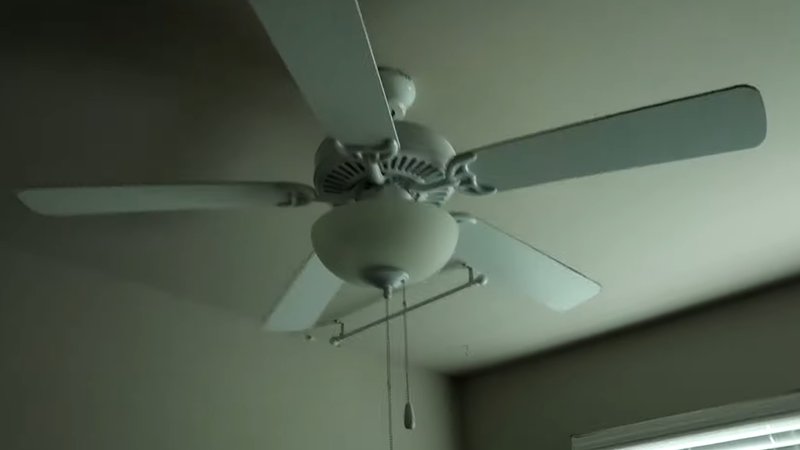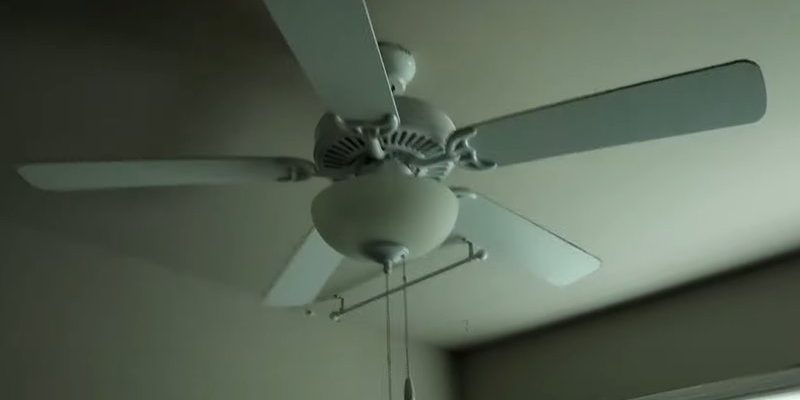
Let me explain: Hampton Bay is a well-loved brand for ceiling fans, mostly because their designs are reliable and their remotes make life easy—when they work, that is. But all those little electronic pieces need to stay in sync, and a simple hiccup (think: dead battery, signal loss, or a code that’s off by one tiny switch) can break the magic. If your remote’s light button is suddenly ignoring you, there are a handful of reasons why. Let’s walk through what’s going on behind the scenes, what you can check, and how to troubleshoot your way back to flipping the lights on and off from the comfort of your couch.
How Hampton Bay Ceiling Fan Remotes Control the Light
Before you panic, it’s worth understanding how these remotes actually work. A Hampton Bay remote sends specific radio frequency (RF) signals to a receiver tucked inside the fan’s housing. Each button (fan speed, light, or reverse) sends a different signal—sort of like your own private Morse code. The “light” button tells the receiver to toggle power to the light kit, turning bulbs on or off.
Every remote and receiver pair must be set to the same code. Usually, this involves a set of small DIP switches inside both your remote and the fan itself. If even one switch doesn’t match up, the whole system gets confused. The light might ignore you while the fan still spins, or nothing might work at all.
Here’s the thing: While this all feels high-tech, the actual process is simple enough for most beginners. Still, a missed step or a loose battery can throw everything out of whack. Sometimes, a little background knowledge clears up that “is it broken?” worry and gives you a clear checklist to get things back on track.
Common Reasons the Light Function Isn’t Responding
You might be wondering why the fan itself still works, but the light doesn’t react. It seems odd, right? Both features are controlled by the same remote. But here’s what often goes wrong:
- Dead or weak batteries in the remote can mean some buttons work while others (like the light) don’t send a strong enough signal.
- The receiver inside the fan might be misconfigured, fried, or just overwhelmed by interference from other electronics in your home.
- The light kit itself could have a bad bulb or a loose connection, so the remote’s doing its job, but the electricity isn’t making it to the actual light.
- DIP switch code mismatch between the remote and receiver can also cause only partial functions to work—or the whole thing to fail.
Personally, I’ve seen people swap the battery in a panic, only to find the dimmer setting was accidentally left all the way down. Or the light kit’s pull chain (if your fan has one) got flipped to “off” at the fixture, so the remote can’t override it. It’s almost always something small—but small details matter.
How to Troubleshoot Hampton Bay Ceiling Fan Remote Light Issues
Let’s walk through a step-by-step troubleshooting process. This isn’t high-stakes surgery—just some patient detective work:
- Check the Light Bulbs and Fixture: Turn off power at the wall switch (or breaker for safety). Unscrew your bulbs and test them in a different lamp. Replace any burnt bulbs. Make sure the light kit is firmly attached to the fan’s base; sometimes a loose wire is the whole problem.
- Replace the Remote Battery: Even if the fan works, the light might not respond if the battery is barely hanging on. Swap in a fresh battery—be sure it’s facing the correct way—and test again.
- Inspect and Test the Remote: Point the remote at your smartphone’s camera and press any button—the IR light (if your remote uses infrared) should flash on your screen. For RF remotes (most Hampton Bay models), listen for a click or look for an LED light on the remote that confirms button presses.
- Check the Pull Chain Switch: If your fan has a pull chain for the light, make sure it’s set to “on.” The remote won’t override a pull chain set to “off.”
- Reset or Resync the Remote and Receiver: This step covers most weird remote problems and can feel like magic when it works. See below.
In my experience, nine times out of ten it’s just a battery or bulb. But if those don’t do the trick, the next step is diving into the sync and code settings.
Resetting and Pairing Your Hampton Bay Remote and Receiver
Sometimes, the remote and fan receiver just stop talking to each other, like old friends after a disagreement. The fix? A quick reset and pairing.
Pro tip: Always turn off power at the breaker before opening any part of your ceiling fan. Electricity is no joke.
How to Reset the Remote and Receiver
- Turn Off Power: Switch off the circuit breaker to the fan for at least 30 seconds. This resets the receiver.
- Set DIP Switch Codes: Open the battery compartment on your remote. Find the small switches (usually 4 or 5), and note their positions. Remove the canopy from your fan and look for matching DIP switches on the receiver unit. Make sure both sets match exactly (use a pencil or small screwdriver to adjust).
- Restore Power and Pair: Replace the fan canopy. Turn the circuit breaker back on. Hold down both the fan and light buttons on the remote for 10 seconds, or whatever the manual recommends, to pair the two.
If all goes well, your light should come alive again. If not, try the process once more. Sometimes the receiver needs a solid minute of no power to fully reset.
What If the Light Still Won’t Respond?
If you’ve checked bulbs, batteries, and codes, but your Hampton Bay ceiling fan light still ignores the remote, there might be a deeper issue. Here’s where things can get a little technical—but don’t worry, I’ll break it down.
- Receiver Failure: The receiver inside the fan might be faulty. This is more common in older fans or if there was a recent electrical storm. Symptoms include fan speeds working but no light response, or everything dead altogether. Swapping in a new receiver usually fixes this.
- Remote Damage: If you’ve dropped the remote or spilled something on it, you could have a damaged button or circuit. Universal Hampton Bay remotes are easy to find if you need a replacement.
- Wiring Issues: During installation, a loose wire or poorly attached light kit can cause power loss to the lights only. If you’re comfortable, double-check all connections—or call a professional if you’re not.
Honestly, most people will never need to replace the receiver or remote, but if all else fails, it’s probably time. If your fan is under warranty, don’t be shy about asking for support.
Universal Remotes vs. Hampton Bay Brand Remotes
You might be tempted to grab a universal remote, thinking any remote can control your ceiling fan. Sometimes this works, but not always. Hampton Bay remotes and receivers use specific codes and frequencies. If your universal remote doesn’t support these, you won’t get far.
- Universal remotes are great if you’ve lost the original, but you’ll need to double-check compatibility with your exact Hampton Bay fan model. Look for remotes that mention “works with Hampton Bay” on their packaging.
- Sometimes, you’ll need to swap out the receiver unit inside the fan for one that matches your new universal remote. This is a little more work but usually solves weird compatibility issues.
- If you’re using a universal remote and the light function isn’t responding, check the programming instructions—they almost always require a pairing or “sync” process.
If you ask me, sticking with a brand remote when possible is just less hassle. Less fiddling, fewer headaches.
When to Call a Professional Electrician
Here’s the honest truth: Most Hampton Bay ceiling fan remote light problems can be solved at home with a calm head and some patience. But safety comes first. If you’re not comfortable working around electricity, or if you need to replace wiring or a receiver, it’s worth bringing in a licensed electrician.
- If you notice scorch marks, buzzing, or smell burning plastic, turn off power immediately and call a pro.
- If you’ve tried resetting, replacing batteries, and checking codes and the light still refuses to work, an electrician can help you pinpoint whether it’s a wiring issue, a receiver problem, or something else together.
- For new installations, professional help ensures everything is up to code and fully safe—no guesswork required.
Don’t feel bad if you need a hand. Ceiling fan wiring can be confusing, and nobody expects you to be an expert.
Keeping Your Hampton Bay Light Remote Function Reliable
Once you’ve sorted things out, a little routine care keeps the “remote dance” to a minimum. Here’s how:
- Change the remote batteries at least once a year—even if they seem fine.
- Give your remote a gentle wipe-down. Dust and gunk can mess with buttons over time.
- If your fan or light kit is in a high-moisture area (like a kitchen or covered patio), keep an eye out for rust or corrosion.
- Write down the DIP switch code and tape it inside the battery cover. You’ll thank yourself next time there’s a power outage or you need to resync.
A little prevention goes a long way. Plus, if the remote does act up, you’ll know exactly where to start—no more panicked Googling.
Final Thoughts: Getting Your Hampton Bay Light Remote Working Again
Troubleshooting a Hampton Bay ceiling fan remote when the light function isn’t responding can feel like a wild goose chase, but honestly, most fixes are simple once you know what to check. Batteries, bulbs, code settings, and a little careful observation usually do the trick. When in doubt, resetting the pairing between your remote and the receiver can be a surprisingly powerful fix.
If the light still ignores your best efforts, don’t be afraid to ask for help or swap out the faulty part. These ceiling fans are built to last, and with a working remote, you’ll be right back to flipping the lights on and off by command—no more jumping up and down to tug a pull chain. Now, when someone else complains their Hampton Bay light isn’t working, you’ll have all the right answers.
